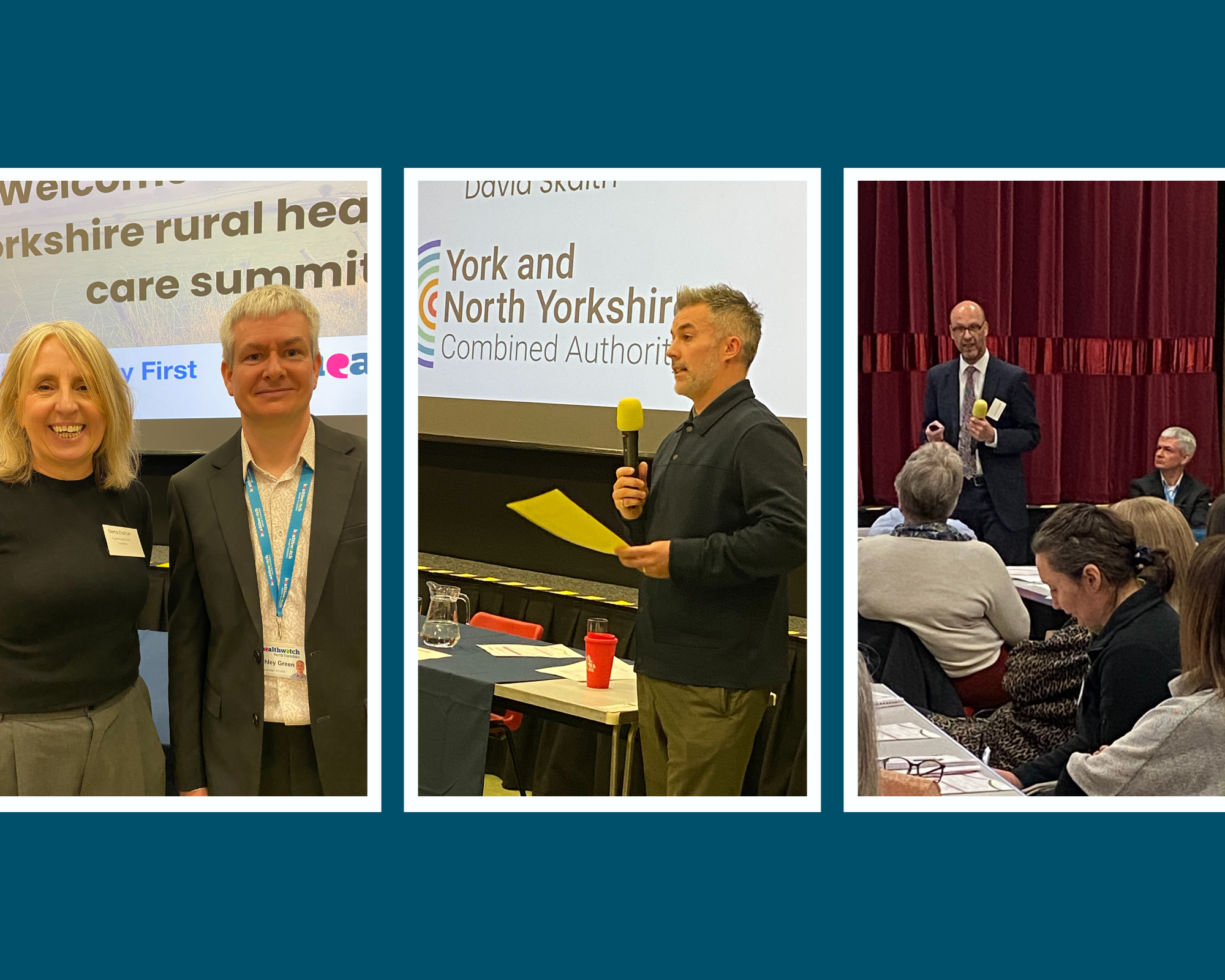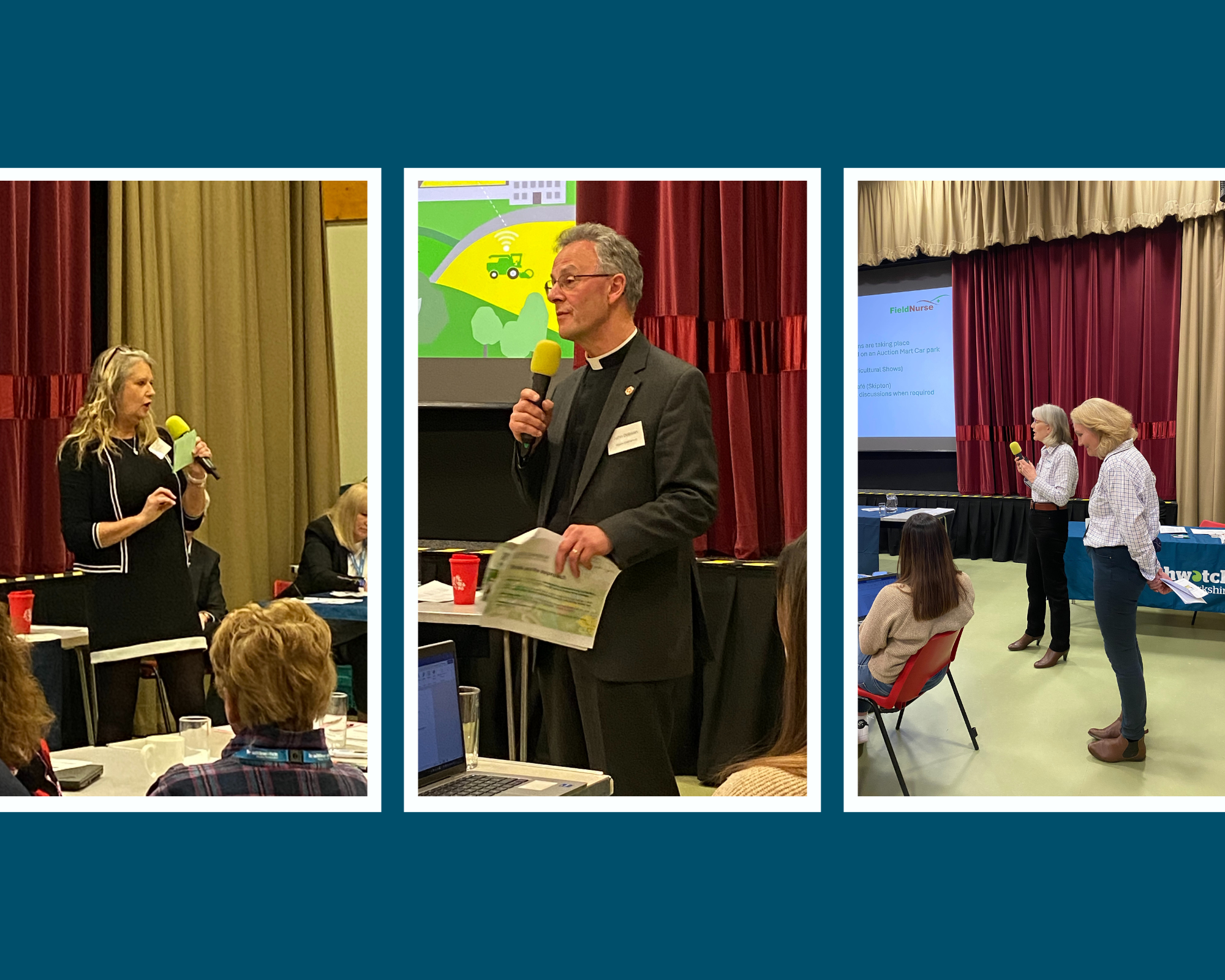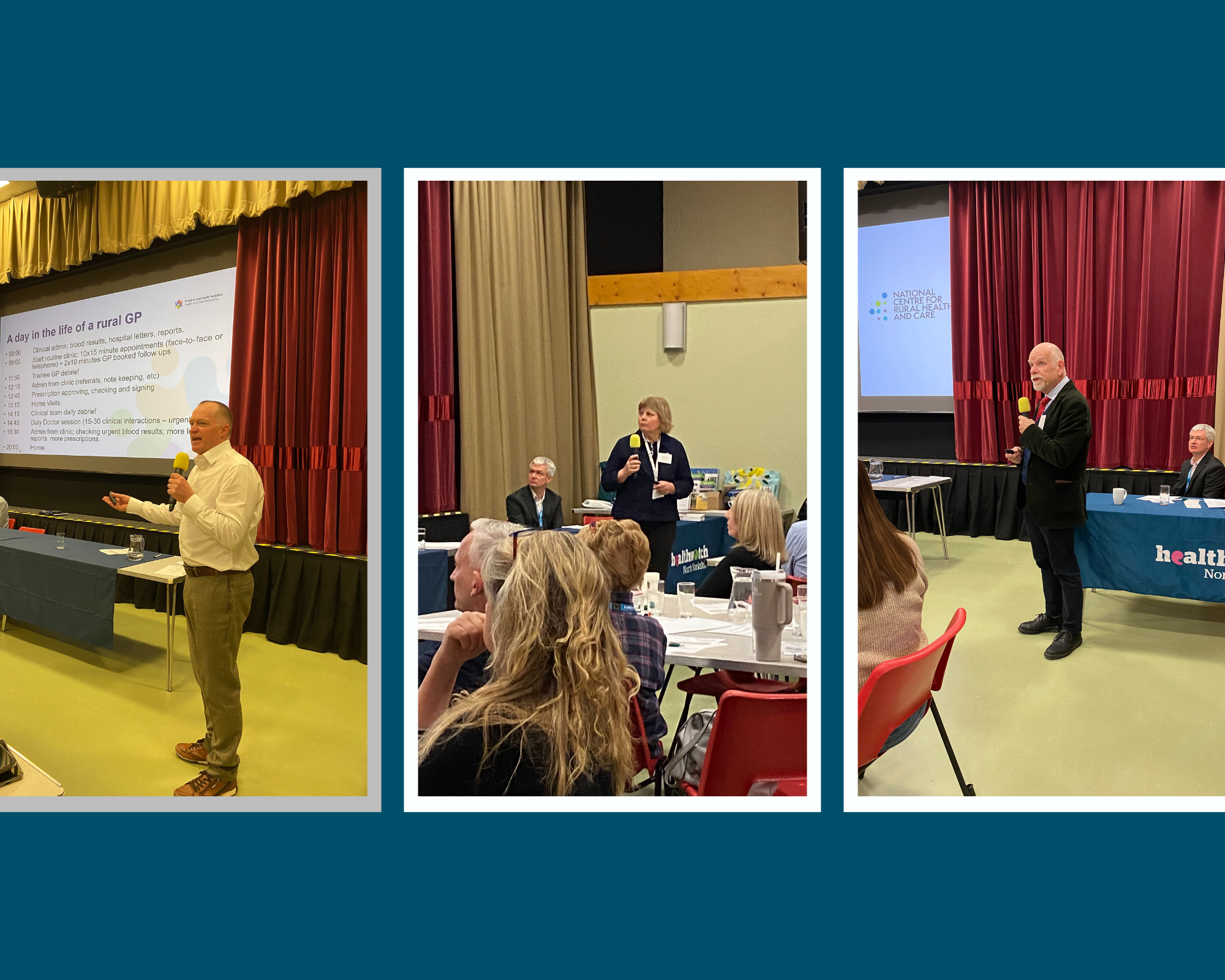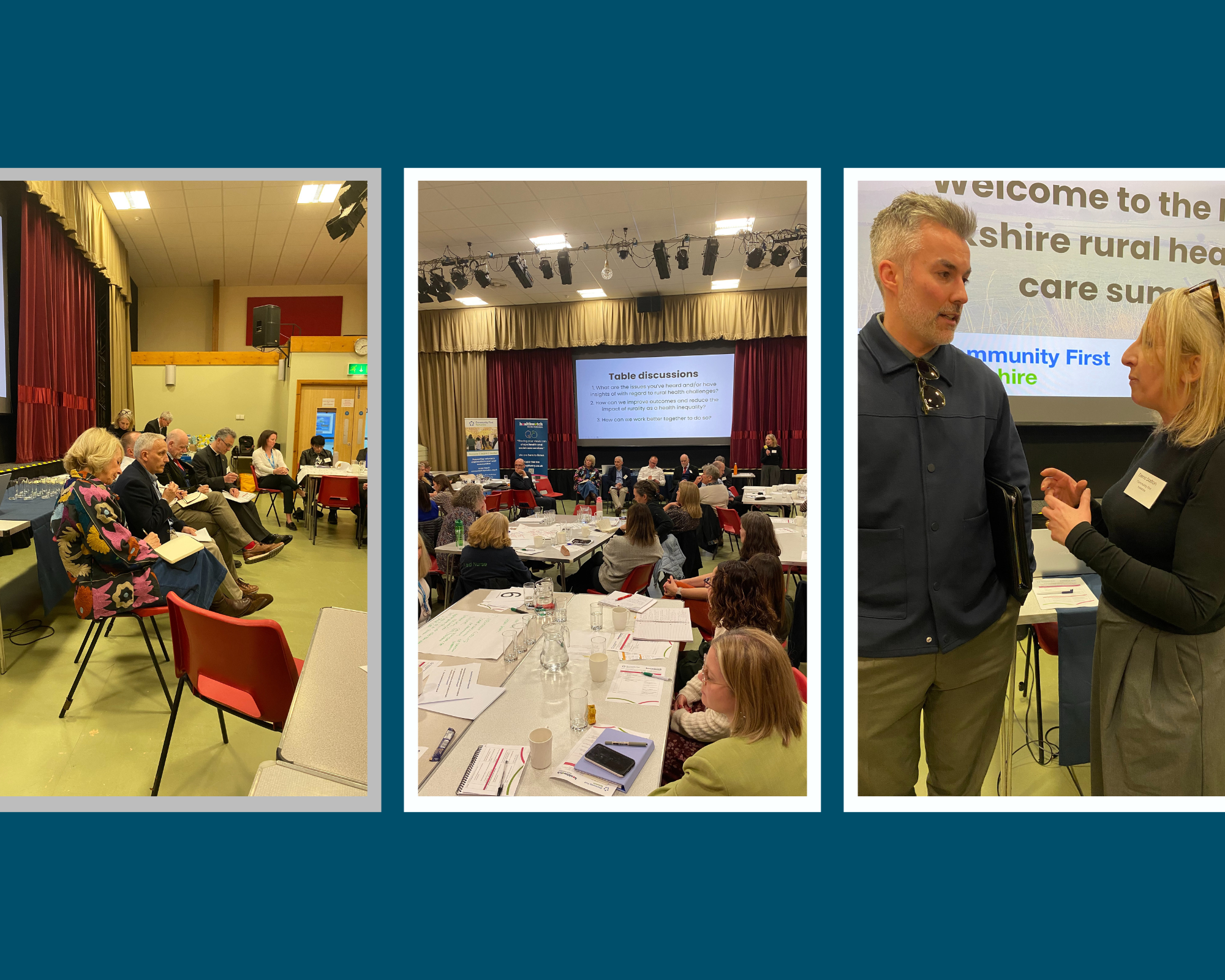Rural reflections: health and social care

Living in rural North Yorkshire isn’t all rolling hills and picture-postcard views—it can mean long journeys just to see a doctor, unreliable public transport, and poor broadband that makes online healthcare inaccessible. For many people in our rural communities, these challenges are part of daily life.
That’s why leaders from the NHS, North Yorkshire Council, voluntary organisations, and rural support groups recently gathered at the Galtres Centre in Easingwold. Hosted by Community First Yorkshire and Healthwatch North Yorkshire, the North Yorkshire Rural Health and Care Summit focused on the real challenges of rural healthcare—and, more importantly, what can be done to fix them.
"Rurality is a real challenge for health inequalities. Today is about what is in our sphere and influence to enact change to build healthy and thriving communities across North Yorkshire." - Dena Dalton, Head of Health Collaboration at Community First Yorkshire.
One of the biggest takeaways from the summit? Healthcare in rural North Yorkshire isn’t just about seeing a health professional. Transport, digital access, housing, and social support all play a huge role in people’s health and well-being.
Ashley Green, chief executive of Healthwatch North Yorkshire, spoke about how many rural residents feel left behind when it comes to healthcare access:
- Some people travel 50+ miles for a hospital appointment.
- There’s a serious shortage of local health services, like dentists and GPs.
- Community transport services are a lifeline—but only when they’re properly funded.
- Poor broadband access makes online healthcare difficult, at a time when digital services are becoming essential.
"Living rurally can mean greater health inequalities. We want to ensure that people are heard and that their concerns are addressed. The voluntary sector is vital to addressing rural health issues."
But it’s not just about physical access to healthcare. The summit also shone a light on hidden rural poverty, isolation, and an ageing population. Many villages have lost their local shops, banks, and post offices—leaving older residents with fewer options for social interaction and support. And without reliable public transport, getting to a GP, hospital, or even a social event becomes a major challenge.
The cost of rural healthcare
Providing healthcare in North Yorkshire’s vast rural areas is expensive. With a high number of older residents, the demand for care is increasing, and current systems are struggling to keep up. David Skaith, Mayor of York and North Yorkshire Combined Authority, highlighted how better housing and transport must be part of the solution. He outlined plans that include:
- A men’s mental health task force.
- A new sports council to promote early intervention in health issues.
Read the Mayor's vision to create healthy and thriving communities
Richard Webb, North Yorkshire Council’s Corporate Director of Health and Adult Services, also challenged outdated views on ageing. Older residents keep our rural communities thriving, and we need better housing solutions and transport initiatives to support them.
Some promising initiatives that are already in motion include:
- Hambleton Community Action’s Exploring clustering of medical appointments to ease transport challenges.
- Airedale Hospital’s ‘hospital at home’ model: This service provides wraparound care and support for patients in their homes, using a combination of in-person and technology-based interventions.
- MyCare24, a 24/7 telephone and video support service helping people manage long-term conditions at home—reducing unnecessary hospital visits.
- The Living Well, Dying Well initiative, which aims to shift more end-of-life care into the community, allowing people to spend their final months with dignity at home rather than in a hospital bed.

Tackling rural Isolation and mental health
For many people in rural North Yorkshire, isolation isn’t just a feeling—it’s a serious health risk. Debbie Swales, CEO of Revival North Yorkshire, shared how loneliness is impacting older residents, especially in areas where public services have disappeared.
"In Yorkshire, we live in a beautiful chocolate box environment. But as you get older, the view changes - especially if you're living in a rural area without support." - Debbie Swales, Revival North Yorkshire.
Meanwhile, The Very Reverend John Dobson, Dean of Ripon, spoke about mental health struggles within farming communities, calling for:
- Better digital connectivity—not as a luxury, but a right.
- A health-first approach to rural strategy, ensuring well-being is at the heart of local policies.
Mental health support is particularly challenging in rural areas due to stretched resources and stigma. One organisation making a difference is Field Nurse, a charity providing healthcare support at livestock auction marts in Skipton and across Lancashire. Their trained nurses—many with farming backgrounds—offer health screenings, mental health support, and signposting to essential services. Last year alone, they conducted 759 consultations, proving that community-based healthcare solutions can be both practical and effective.

A new approach to care and funding
The summit also sparked vital conversations about how healthcare and support systems are structured in rural areas. Key points raised included:
- The way home care is funded needs to change. There's a need for rural commissioning through cluster care models or paying daily rates rather than hourly rates, which can better reflect the unique challenges of delivering services in rural areas.
- Appointments should be grouped together to make it easier for residents to access healthcare without the burden of multiple, time-consuming trips.
- The voluntary, community, and social enterprise (VCSE) sector also needs more sustainable funding, particularly for core services. Often, these organisations are forced to constantly start new projects to secure funding, when they could be providing more ongoing, rural-focused solutions if given stable support.
- Co-location of services is key. By making use of unused council buildings to bring different services together in one space, rural areas can improve the accessibility and efficiency of care.
- There’s a need to re-look at how outcomes are measured, moving beyond just quantitative data to also focus on the personal experience and quality of life of those receiving care.
- Tapping into local universities to encourage more professionals to work in rural areas is crucial for addressing workforce shortages.
- Housing needs to be addressed, particularly the impact of second homes on local communities, which drives up housing costs and contributes to rural depopulation.
Access to services and the need for change
The summit highlighted the importance of developing a hub and spoke model for service delivery. This approach would make it easier for rural residents to access a range of services in their local area, rather than having to travel long distances.
There were also calls for travelling specialists to ensure that rural communities aren’t overlooked when it comes to receiving expert care.
Good models of rural support, such as home help and district nurses, need to be expanded and rolled out more widely across the region. Additionally, budgets and funding allocation need to take rurality into account, ensuring that resources are distributed appropriately for areas with unique challenges.
Lastly, communication and integration between services must be improved. A lot of the data and intelligence about rural healthcare challenges is already available—it’s time to act on it.
GP shortages and the digital divide
Dr. Simon Stockhill, chairperson of the Humber and North Yorkshire Primary Care Collaborative, painted a stark picture of healthcare disparities. Scarborough has significantly fewer GPs per person compared to Harrogate—a gap that needs urgent attention.
Meanwhile, Helen Flynn, the chief executive of Nidderdale Plus, highlighted that many older residents struggle with the shift to digital healthcare. And Ivan Annibal, from the National Centre for Rural Health and Care, pinpointed workforce shortages as the most pressing issue. With high living costs, it’s increasingly difficult to attract and retain healthcare professionals in rural areas.

Key takeaways
Throughout the day, lively discussions led to some clear conclusions:
- No one should be disadvantaged by where they live.
- Rural healthcare is complex and varies by location.
- Innovation in how service are provide is necessary.
- Rural communities are valuable resources that need investment.
- Addressing rural deprivation requires stronger advocacy.
- Better rural housing is essential for improving health outcomes.
- Digital access must be both equitable and affordable.
- Local voluntary organisations should be better integrated into the healthcare system.
What’s next?
Attendees left the summit with clear action points, including:
- Strengthening links between healthcare providers and rural communities.
- Encouraging ride-sharing and better transport options.
- Exploring integrated neighbourhood teams, bringing together GPs, social care workers, community health professionals, voluntary groups, and other local services to provide personalised, community-based care, ensuring people get the right support at the right time, close to home.
- Gathering more feedback from service users to highlight rural inequalities.
- Revisiting the North Yorkshire Rural Commission’s recommendations.
- Making hospital outpatient appointments more accessible.
There was a discussion about the need for a dedicated rural health and care plan. Councillor Michael Harrison, Chair of the North Yorkshire Health and Wellbeing Board, sees this as an opportunity to reset priorities and push for more rural-friendly policies within the NHS.
One key demand? A ‘rural lens’ in NHS policy, meaning rural healthcare challenges are recognised at every level. With a stronger coming together of health services, local councils, and community groups, North Yorkshire can build a sustainable, putting-people-first approach to rural healthcare.
This isn’t just a one-off discussion. The real work starts now—and we’ll keep you posted on the progress.


